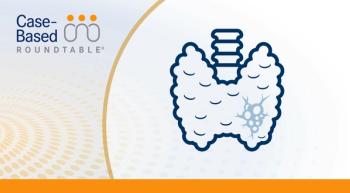
Future Treatment Landscape of RAI-Refractory DTC
Steven Sherman, MD, FACE, provides closing thoughts on unmet needs and future directions for the treatment of patients with RAI-refractory DTC.
Steven I. Sherman, MD, FACE: Unfortunately, as I mentioned earlier, we are still in an era where we do not have systemic therapies that can cure patients who have metastatic radioiodine-refractory differentiated thyroid cancer. Clearly, 1 of the most important unmet needs is the ability to cure people who have reached that point in their thyroid cancer journey.
We’re beginning to understand a role for combination therapies such as lenvatinib and immunotherapy, but we need to expand on this. We need to be able to identify how to combine treatments and how to identify more molecularly targeted treatments that hit some of the difficult-to-manage oncogenes that are often seen in this patient population.
An example of that would be that the second- or third-most-common oncogene that we find in this patient population are RAS mutations. So far, these have been resistant to specific targeted therapies. It’s very important to identify new therapies that can work against some of these molecular subtypes.
Other difficult areas to manage are some of the histologic subtypes of thyroid cancer, such as Hurthle cell carcinomas, which do not have identifiable oncogenes.
Lenvatinib does have a significant efficacy and role in the treatment of Hurthle cell cancers, but like other forms of radioiodine-refractory differentiated cancer, lenvatinib is not curative for this group, and it can often be more difficult to treat, particularly because of their high rate of skeletal metastases.
In summary, we need to figure out how to do a better job and go beyond therapies, like lenvatinib, to prevent eventual progression and hopefully identify cures rather than just control for this disease.
Transcript edited for clarity.












































